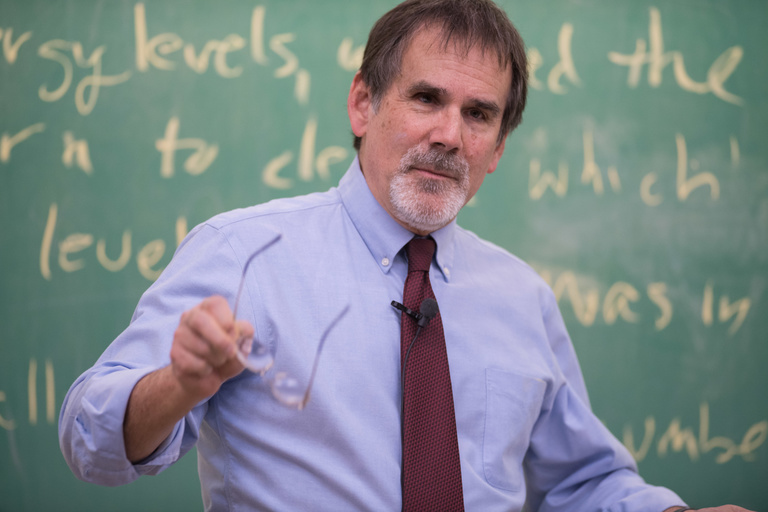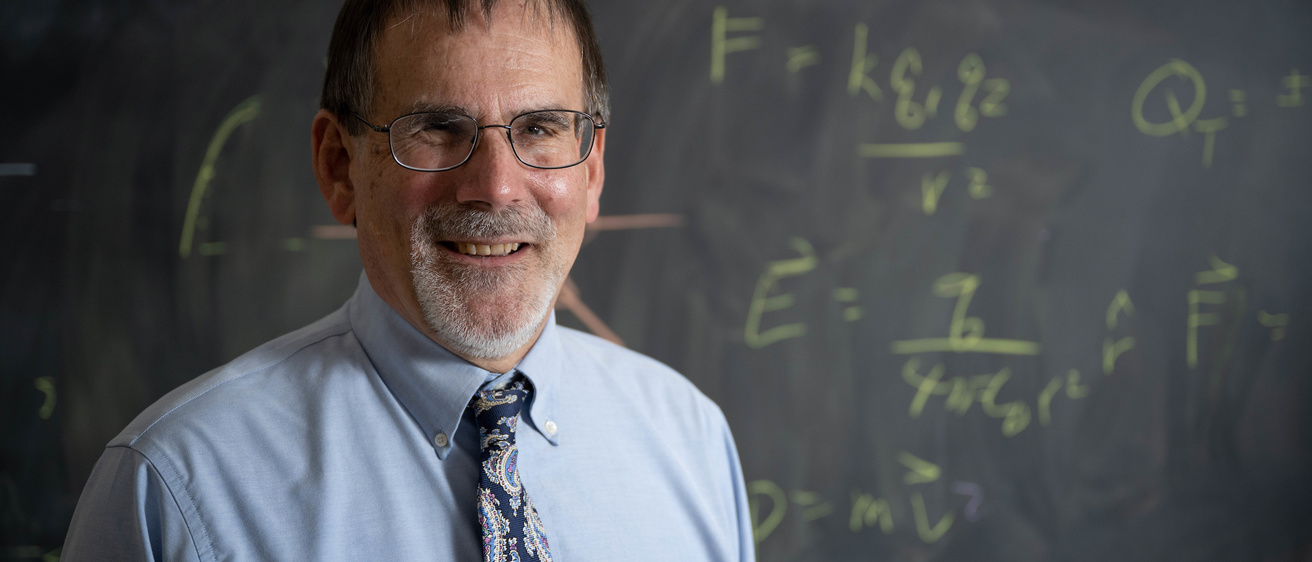A team led by University of Iowa physicist Craig Kletzing has won $115 million from NASA to study the mysterious, powerful interactions between the magnetic fields of the sun and Earth.
The contract award is the single largest externally funded research project in UI history. Out of more than 35,000 projects awarded to the UI since 1965, Kletzing’s contract is the only research award of more than $100 million.

“This is a career milestone for me personally,” Kletzing says. “It’s also a fantastic opportunity to do some really great science with an all-star team.”
“This is a monumental accomplishment for the University of Iowa, and in particular for Craig Kletzing’s ambitious and experienced team and the Department of Physics and Astronomy,” says John Keller, interim vice president for research and dean of the Graduate College. “Not only is it the single-largest contract award in the history of this institution, but the work will pay enormous dividends in terms of new understanding about the sun’s impact on space and planets. As with (UI physicist) James Van Allen’s discovery of the radiation belts, this project again demonstrates to the world why the University of Iowa is a global leader in space science and discovery.”
Kletzing’s project, called Tandem Reconnection and Cusp Electrodynamics Reconnaissance Satellites (TRACERS), is part of a larger initiative, NASA’s Explorers Program, which is studying how the sun affects space and the space environment around planets.
The funding amount is subject to change, as it does not include ride share costs.
NASA is keen to study these magnetic interactions because of their effects on Earth. If it weren’t for the magnetic bubble surrounding our planet, the sun’s supersonic, heated winds would inflict harmful doses of radiation that would affect most, if not all, life. The Earth’s magnetic field, with help from its atmosphere, blocks most of the sun’s harmful energy.
The UI team includes:
Jasper Halekas, ACE lead (electron instrument)
George Hospodarsky, MSC lead (magnetic search coil)
Scott Bounds, Instrument Manager
Jeff Dolan, Instrument Systems Engineer
Dan Crawford, Science Operations Center lead
Rich Dvorsky, Mechanics System Engineer
Carol Preston, TRACERS Accountant
Loren LeClair, TRACERS contracting lead (in OVPR’s Division of Sponsored Programs)
But the solar wind does find some ways to reach the Earth, through openings created when the Earth’s and sun’s magnetic fields touch. When these holes are sustained, the solar wind pours through in regions called cusps.
Cusps can have a dramatic impact on a host of activities. In 2003, for example, twin events called the Halloween Storms triggered auroras that could be seen as far south as Texas. The storms also interfered with GPS signals and radio communications, and caused the Federal Aviation Administration to issue its first-ever warning to airlines to avoid excess radiation by flying at low altitudes.
“The TRACERS research addresses long-standing questions about how energy couples from the solar wind into our local magnetosphere,” Kletzing says. “One of the long-term goals of our space research to evolve toward predictive ‘space weather’ models to improve our ability to utilize space as a resource. The science that TRACERS studies will be essential to achieve this goal.”
Specifically, TRACERS will complement a current NASA mission, called MMS, in which four spacecraft are swooping around Earth’s magnetosphere, searching for the magnetic openings and observing them when they occur. TRACERS spacecraft will study those magnetic effects closer to Earth.
“We’re looking at what comes out of the bottom end (of the opening) whenever magnetic reconnection happens,” Kletzing says.
Previous major UI grants
- $88.5 million, Francois Abboud, 1971. The longest continuously funded grant under the same principal investigator, the research this grant funds focuses on the study of a wide array of diseases and illnesses, including anxiety, hypertension, and vascular damage.
- $75.4 million, Thomas Scholz, 1998. The grant funded the Child Health Specialty Clinics to improve the health, development, and well-being of children and youth with special health care needs, especially those in rural areas.
- $64.1 million, Jean Robillard, 1969. Researchers at the General Clinical Research Center investigate areas of women's health, therapy of prostate cancer, bone loss in anorexia, cochlear implants, gene transfer in cystic fibrosis, and homocysteine and atherosclerosis, among others.
- $60.7 million, Bruce Gantz, 1985. Researchers at the Iowa Cochlear Implant Clinical Research Center translate research on the auditory system into technologies that improve speech perception for adults and children who have become deaf, as well as infants who are born deaf.
- $53.4 million, William Clarke, 2004. This grant supported Iowa’s contribution to an international research consortium studying the safety and effectiveness of a treatment for patients with Type 1 diabetes.
- $52.1 million, Jane Paulsen, 2000. PREDICT-HD tracked 1,400 people at risk for Huntington’s Disease over the course of 12 years and looked into the earliest brain and behavioral changes in healthy adults who have the genetic mutation for Huntington’s disease and may develop the disease later in life.
- $48.9 million, George Weiner, 2002. The University of Iowa–Mayo Clinic Lymphoma Specialized Program of Research Excellence (SPORE) is a highly productive research collaboration focused on developing new approaches for the prevention, detection, and treatment of lymphoma.
- $48.3 million, George Weiner, 2000. This grant supports Holden Comprehensive Care Center, Iowa’s only National Cancer Institute-designated comprehensive cancer center and one of only 50 in the nation.
- $42.5 million, Peter Thorne, 1990. This award established and supports the UI Environmental Sciences Research Center, which conducts research connecting the array of environmental pollutants in air, water, soil, and food to human diseases and explores how to promote public health by preventing these exposures.
